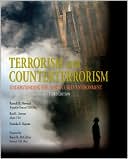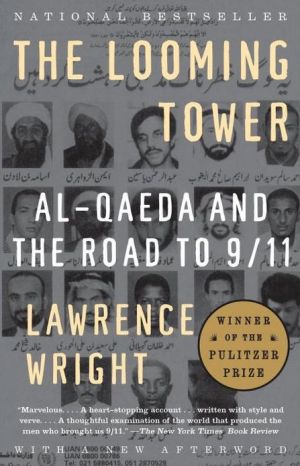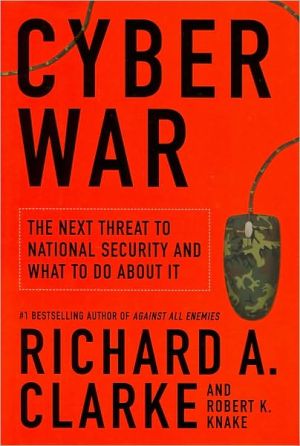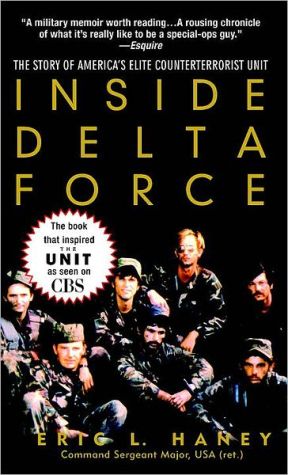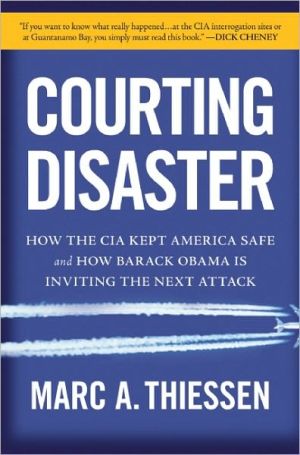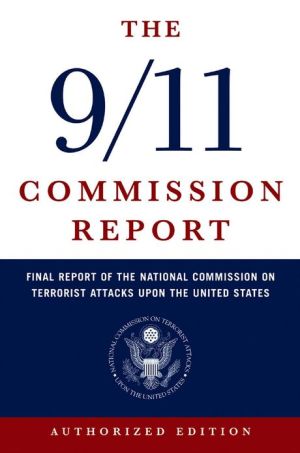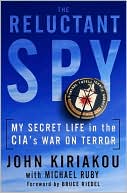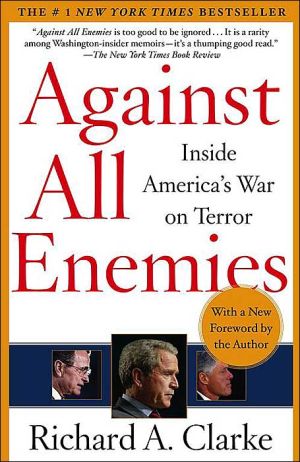Terrorism and Counterterrorism: Understanding the New Security Environment, Readings and Interpretations
Search in google:
In this new edition of TERRORISM AND COUNTERTERRORISM: UNDERSTANDING THE NEW SECURITY ENVIRONMENT, READINGS AND INTERPRETATIONS, Brigadier General (Retired) Russell Howard, Major Reid Sawyer and Natasha Bajema have collected original and previously published seminal articles and essays by political scientists, government officials, and members of the nation’s armed forces. The editors and several of the authors write from practical field experience in the nation’s war on terrorism. Others have had significant responsibility for planning government policy and responses. The contributors include a majority of the significant names in the field including John Arquilla, Richard Betts, Martha Crenshaw, Rohan Gunaratna, Bruce Hoffman and Paul Pillar. Part One of the book analyzes the philosophical, political, and religious roots of terrorist activities around the world and discusses the national, regional, and global effects of historical and recent acts of terrorism. In addition to material on the threats from suicide bombers, as well as chemical, biological, radiological, and nuclear weapons, there are also important contributions analyzing new and growing threats such as genomic terrorism. Part Two deals with past, present, and future national and international responses to—and defenses against—terrorism. Essays and articles in this section analyze and debate the practical, political, ethical, and moral questions raised by military and non-military responses (and pre-emptive actions) outside of the context of declared war. This section has expanded on the previous edition to include three timely chapters on terrorism and the media, the role of the private sector, and winning the war on terrorism.
Unit I Defining the Threat Chapter 1 Defining Terrorism: Means, Ends, and Motives1.1 Bruce Hoffman, “Defining Terrorism” Inside Terrorism (2006)1.2 Eqbal Ahmad and David Barsamian, “Terrorism: Theirs & Ours,” Terrorism: Theirs & Ours (2001)1.3 Martha Crenshaw, “The Logic of Terrorism: Terrorist Behavior as a Product of Strategic Choice,” Origins of Terrorism: Psychologies, Ideologies, Theologies, States of Mind, Walter Reich, ed. (1998)Chapter 2 Understanding the Facilitators of Modern Terrorism2.1 Audrey Kurth Cronin, “Behind the Curve: Globalization and International Terrorism,” International Terrorism (Winter 2002/03)2.2 Ray Takeyh and Nikolas K. Gvosdev, “Do Terrorist Networks Need a Home?” Washington Quarterly (Summer 2002)2.3 Stewart Patrick, “Weak States and Global Threats: Fact or Fiction,” Washington Quarterly (Spring 2006)Chapter 3 The New Terrorism3.1 Russell D. Howard, “The New Terrorism,” Original Work (2007)3.2 John Arguilla, David Ronfeldt, and Michele Zanini, “Networks, Netwar, and Information-Age Terrorism,” Countering the New Terrorism (1999)3.3 Rohan Gunaratna, “Defeating Al Qaeda—The Pioneering Vanguard of the Islamic Movements,” Washington Quarterly (2007)3.4 Natasha E. Bajema, “Rethinking Threat Assessments for Terrorist Targets: Applying the Lessons of Complex Terrorism,” Original Work (2007)Chapter 4 Religion and the Intersection with Terrorism4.1 Magnus Ranstorp, “Terrorism in the Name of Religion,” Journal of International Affairs (Summer 1996)4.2 Quintan Wiktorowicz, “A Genealogy of Radical Islam,” Studies in Conflict & Terrorism (2005)4.3 Emmanuel Sivan, “The Clash within Islam,” Survival (Spring 2003)Chapter 5 Modern Methods and Modes of Attack5.1 Gavin Cameron and Natasha E. Bajema, “Assessing the Post-9/11 Threat of CBRN Terrorism,” Original Work (2007)5.2 John Ellis, “Terrorism in the Genomic Age,” (2003)5.3 Chris Dishman, “The Leaderless Nexus: When Crime and Terror Converge,” Studies in Conflict & Terrorism (2005)5.4 Bruce Hoffman, “The Logic of Suicide Terrorism,” The Atlantic Monthly (June 2003)5.5 Assaf Moghadam, “The Evolution of Suicide Terrorism and Its Implications for Research,” Original Work (2007)Unit II Countering the Terrorist ThreatChapter 6 Terrorism and the Media6.1 Boaz Ganor, “Dilemmas Concerning Media Coverage of Terrorist Attacks,” The Counter-Terrorism Puzzle, A Guide for Decision Makers (2005)6.2 John F. Stacks, “Watchdogs on a Leash: Closing Doors on the Media,” The War on Our Freedoms: Civil Liberties in an Age of Terrorism (Public Affairs, 2003)6.3 Jarret Brachman, “High-Tech Terror: Al-Qaeda’s Use of New Technology,” The Fletcher Forum of World Affairs (Summer 2006)6.4 Gabriel Weimann, “www.terror.net: How Modern Terrorism Uses the Internet,” Special Report No. 116 (March 2004)Chapter 7 The Challenges of Terrorism to a Free Society7.1 Richard K. Betts, “The Soft Underbelly of American Primacy: Tactical Advantages of Terror,” Political Science Quarterly (vol. 117, no. 1, 2002)7.2 Bruce Hoffman, “A Nasty Business,” The Atlantic Monthly (January 2002)7.3 Rob de Wijk, “The Limits of Military Power,” Washington Quarterly (Winter 2001)7.4 Richard H. Shultz Jr., “Showstoppers: Nine Reasons Why We Never Sent Our Special Operations Forces after Al Qaeda before 9/11,” Weekly Standard (January 26, 2004)Chapter 8 Strategies and Approaches for Combating Terrorism8.1 Martha Crenshaw, “Terrorism, Strategies, and Grand Strategies,” Attacking Terrorism: Elements of a Grand Strategy (Georgetown University Press (February 2004)8.2 Daniel Byman, “US Counter-terrorism Options: A Taxonomy,” Survival (Autumn 2007)8.3 Russell D. Howard, “Preemptive Military Doctrine: No Other Choice,” Original Work (2005)8.4 Paul R. Pillar, “Beyond Al Qaeda: Countering a Decentralized Terrorist Threat,” Washington Quarterly (Summer 2004)8.5 Steven Simon and Jeff Martini, “Terrorism: Denying Al Qaeda Its Popular Support,” Washington Quarterly (Winter 2004–05)8.6 Matthew Levitt, “Untangling the Terror Web: Identifying and Counteracting the Phenomenon of Crossover between Terrorist Groups,” SAIS Review (Winter–Spring 2004)Chapter 9 Leveraging the Role of the Private Sector9.1 Mark Basile, “Going to the Source : Why Al Qaeda’s Financial Network is Likely to Withstand the Current War on Terrorist Financing,” Studies in Conflict and Terrorism (vol. 27, 2004)9.2 Kelly Hicks and Roseann McSorley, “Global Terrorism and the Private Sector: The Impact of 9/11 on Security Awareness and Operations in Financial Institutions,” Original Work9.3 Stacy Reiter Neal, “Cross-Sector Intelligence Partnerships,” Original Work (2007)Chapter 10 Winning the War on Terrorism10.1 Bruce Riedel, “Al Qaeda Strikes Back,” Foreign Affairs (May/June 2007)10.2 Audrey Kurth Cronin, “How al-Qaida Ends: The Decline and Demise of Terrorist Groups,” International Security (Winter 2002/03)10.3 Reid Sawyer and Jodi M. Vittori, “The Uncontested Battles: The Role of Actions, Networks, and Ideas in the Fight against Al-Qaeda,” Original Work (2007)10.4 Russell D. Howard, “Winning the Campaign against Terrorists: Five Considerations,” Original Work (2007)
